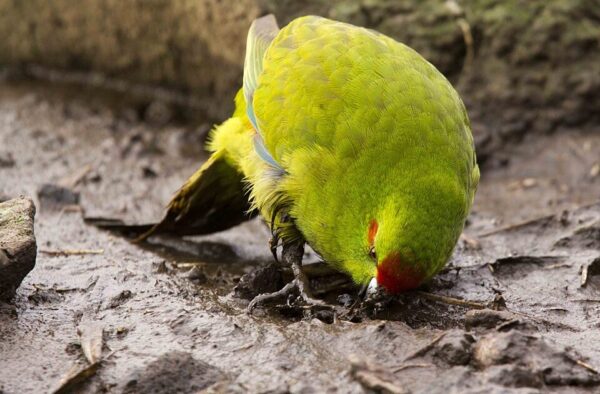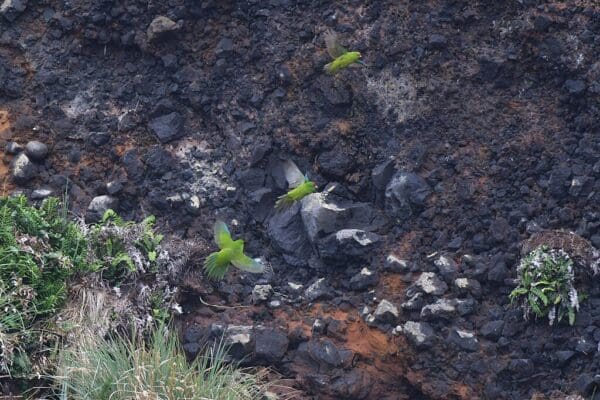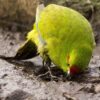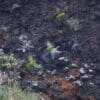Reischek’s Parakeet
Also known as:
Antipodes Red-crowned Parakeet
Also known as:
Antipodes Red-crowned Parakeet

Cyanoramphus

hochstetteri
Size:
28 cm (11 in)
Weight:
140 g (4.9 oz)
Subspecies including nominate:
one
Colour Adult:
Both adults more yellow/green than congener C. novaezelandiae; orange/red markings on head and sides of rump; outer webs of flight feathers paler blue.
Colour Juvenile:
Not recorded.
Call:
Most common call a nasal rattling chatter kehkehkehkehkeh. Also a quieter, more musical, nasal squabbling tu-tu-tu-tu, and single nasal or raspy notes.
More Information:
Content Sources:
New Zealand Birds Online
Cornell Lab of Ornithology/Birds of the World
Captive Status:
—
Longevity:
—
Housing:
—
Diet:
—
Enrichment:
—
Nest Box Size:
—
Clutch Size:
—
Fledging Age:
—
Hatch Weight:
—
Peak Weight:
—
Weaning Weight:
—
World Population:
4000-6000 individuals, stable.
IUCN Red List Status:
Not Evaluated
CITES Listing:
Appendix I
Threat Summary:
The species apparently has a stable population and is afforded protection by the islands’ isolated location. The biggest threat to their long-term survival is the introduction of mammalian predators. In the winter of 2016 an attempt was made to eradicate mice from Antipodes Island.
Range:
Endemic to Antipodes Island and Bollons Island, with smaller numbers on Archway, Windward and Leeward Islands.
Habitat:
Common throughout 2000 ha of low vegetation in more open areas around the North Plains and the coastal fringe.
Wild Diet:
Wild diet includes leaves, flowers, berries and seeds from 14 plant species. Invertebrates are also included as a minor component of the diet. Will occasionally scavenge from corpses of seabirds but not as frequently as Antipodes Island Parakeets (Cyanoramphus unicolor).
Ecology and Behaviour:
These parrots flock to seasonally available foods, which they mainly forage for on the ground. In winter, large numbers are seen in abandoned penguin breeding colonies. Are strong fliers and have been observed commuting between islands. Social behaviour is similar to other Cyanoramphus species; are strongly territorial around nests and will chase intruders away.
Clutch and Egg Size:
Likely as in Cyanoramphus novaezelandiae and C. saisetti: Average 5 eggs.
Breeding Season:
Nesting is October – March in tunnels modified or constructed at the bases of clumps of tussocks or ferns.
Related Links:
—



